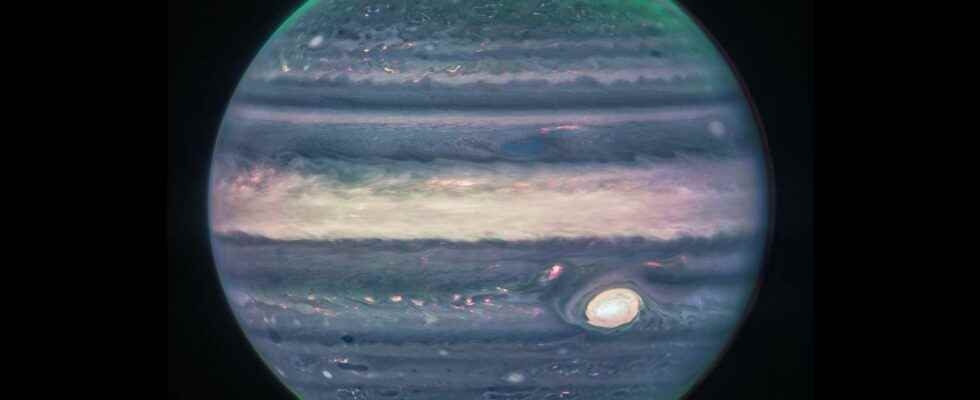You will also be interested
[EN VIDÉO] The first images from the James Webb Space Telescope Discover the first images sent by NASA of the JWST, the space telescope with unparalleled performance.
For 10 years already, she has carefully inspected the data acquired by the telescope spatial Hubble, and now James-Webb. Judy Schmidt, better known as Geckzilla on its website and on flickror even SpaceGeck on Twitter, amazes the world with the astronomical images it produces. Nothing escapes him: “I regularly check the archives, so when something interesting pops up, I download it and check it out”, she told Futura. And lately, it is of course the JWST data that are in the spotlight! Army of one ” computer Windows [qu’elle a construit elle-même]of a Tablet Wacom and Photoshop, as well as a software free of chargeESA called FITS Liberator”, Judy has already processed some 700 images. A meticulous process, especially for colors. “I don’t know the exact number, but I’m sure it’s a pretty close approximation. »
She explains to the editor: “The colors are simply a product of combining the data in the red, blue, and green color channels. The original data are all grayscale images. I usually download every possible combination and look at each to see what will work best. I then take care to create a white balance, that is, I adjust the color channels until the image doesn’t look too tinted with one color or another. Once the white balance is achieved, it looks more natural to our eyes. »
“Star-forming nebulae are among the most beautiful places in the sky”
When asked if she has a preference among the 700 images made, she answers: “That’s the hardest question. There are a number of them that are dear to me”. But ultimately, the chosen one happens to be a nebula, more precisely a part of the Chameleon complex. “As well as being one of the very difficult first images for me to create, I think the nebulae forming stars are among the most beautiful places in the sky,” she enthuses. The chameleon complex has several segments: the one treated by Judy is segment I, based on data acquired by Hubble.
Of course, this is not the only astronomical object that Judy has had the opportunity to study in detail. “I know what type of object I am dealing with almost every time, but many visible details in a given image other than the primary target may not yet have a name or designation, she explains. In rare cases, I spot something and can’t figure out what it is, so it could be something exciting. This only happened once with the Galaxy IC 5063, and I’m not sure it will ever happen again. » Indeed, this galaxy reveals strange twilight rays which have recently been analyzed by researchers.
Looking at this new pic of IC5063 (from Barth’s Prop15444), trying to figure out if I can make a color image… hmm maybe not, but are these cones I’m straining to see real, I wonder? ???? pic.twitter.com/EtMSyhhTkj
—Judy Schmidt (@SpaceGeck) December 2, 2019
More photos of the JWST may be coming soon…
Although she is known internationally for her images, in particular by the Nasa with whom she collaborated very recently, Judy Schmidt don’t plan to make it a full-time job. “I certainly can’t and don’t want to. » With an initial training in graphic design, she has always loved astronomy and followed the APOD (Astronomy Picture of the Day) for years before it began to process data itself.
And the latest one was more complicated than the others: Jupiter ! “The rotation of Jupiter was a challenge, she explains. The telescope does not take all of its images at the same time. Most of them are at least a few minutes apart, but for the three-color Jupiter image in particular, one was more than 30 minutes later than the others. Jupiter spins very fast, so 30 minutes is more than enough for the planet to not line up with the other images at all. I fix this by projecting the image onto a 3D sphere, then using the 3D program to rotate that sphere to align with the previous images. It’s not perfect, but it’s the best way I know to line them up. » For this last image, Judy collaborated with NASA. Soon other images from the JWST should arrive, but we will not know more until they are released!
Interested in what you just read?
